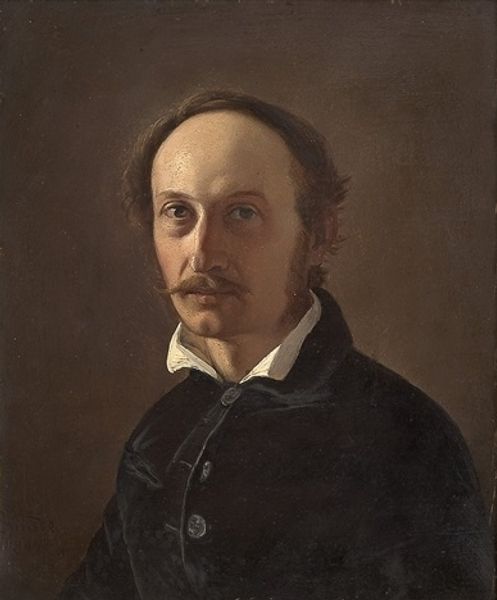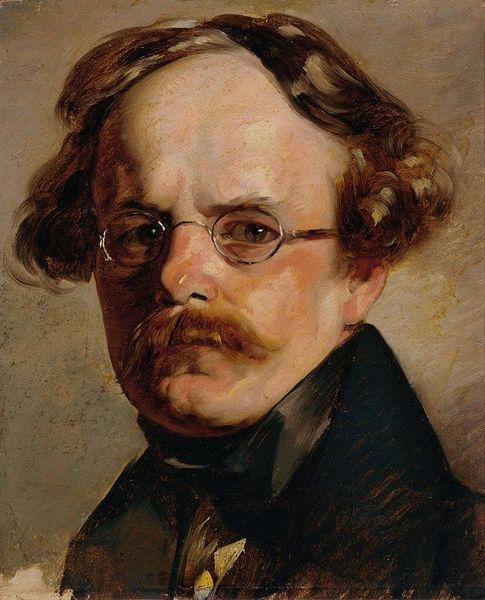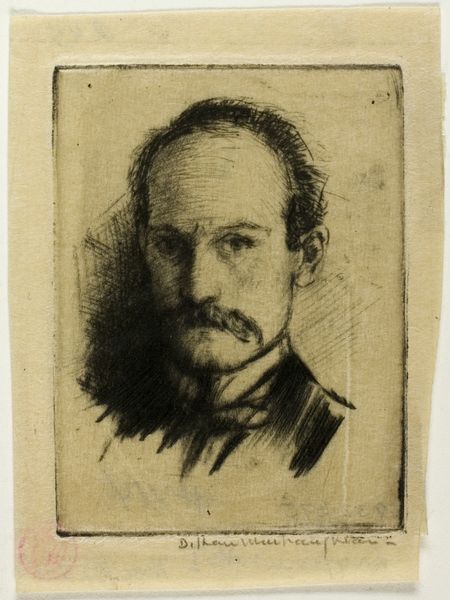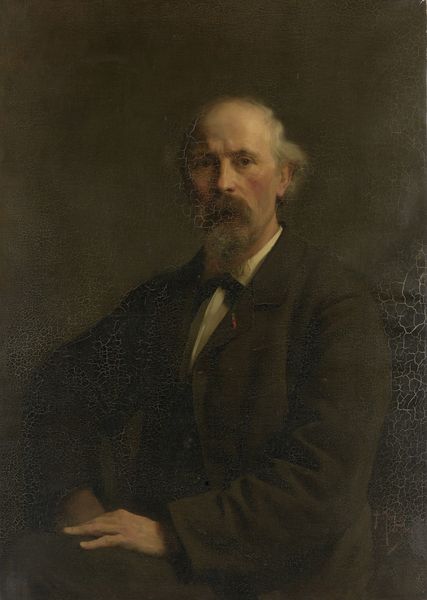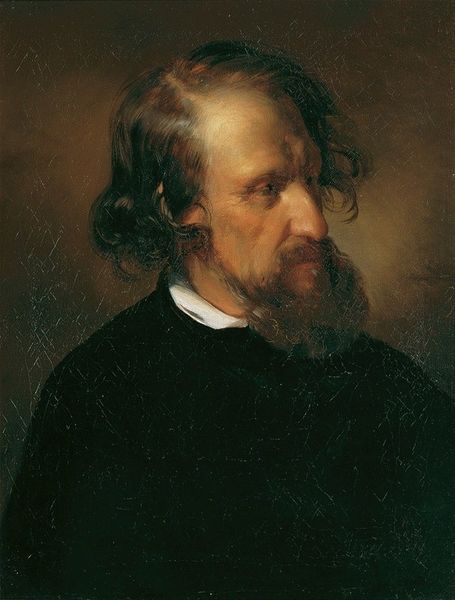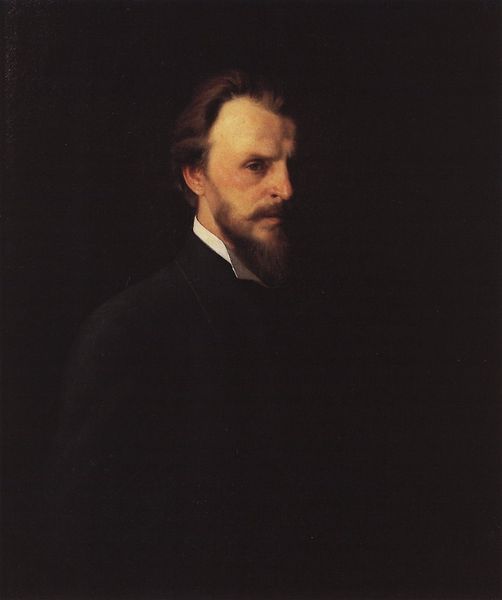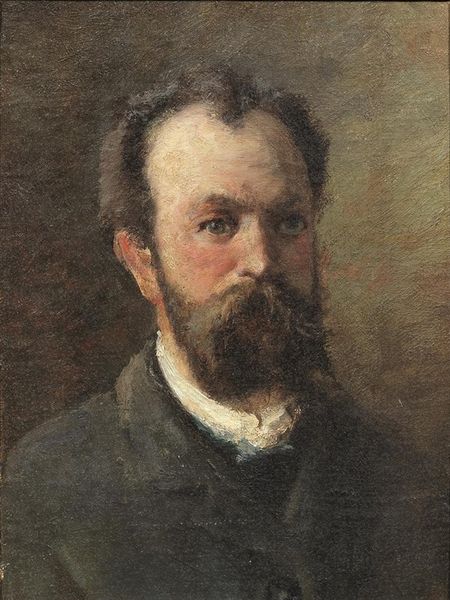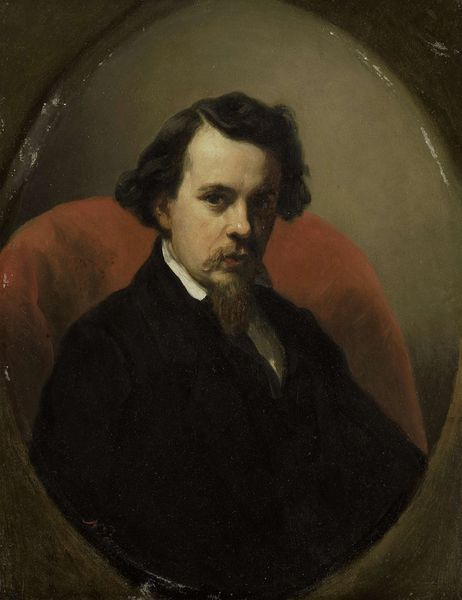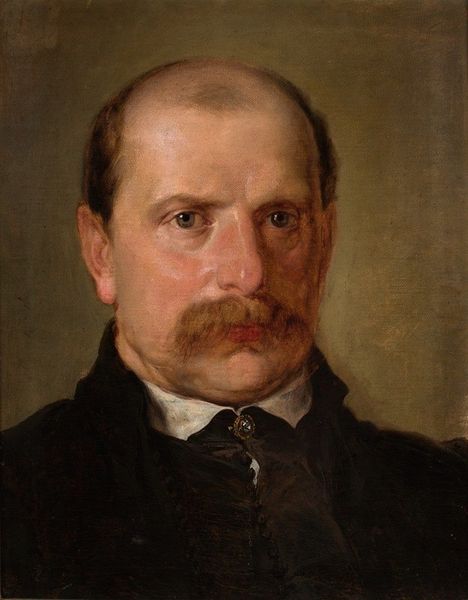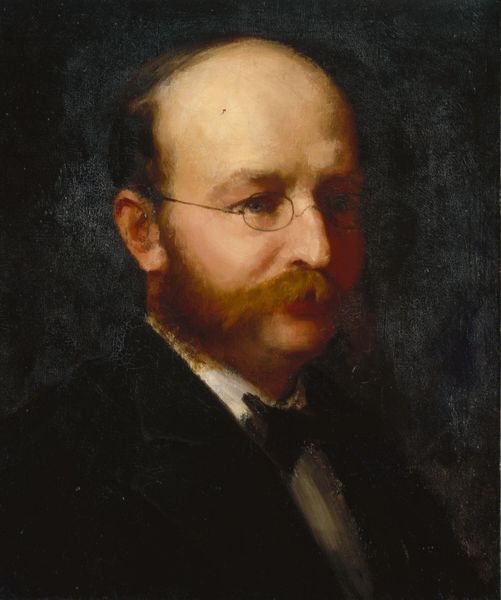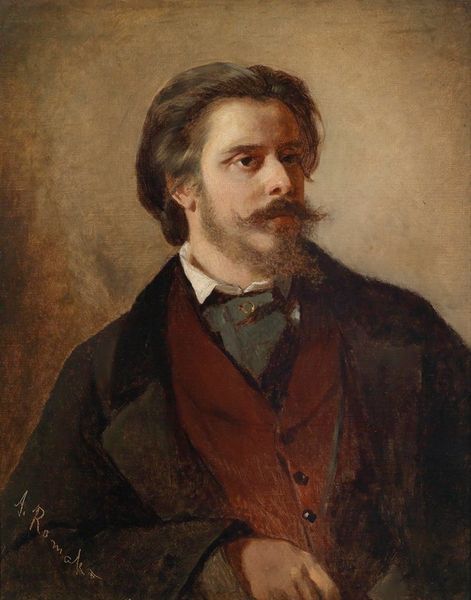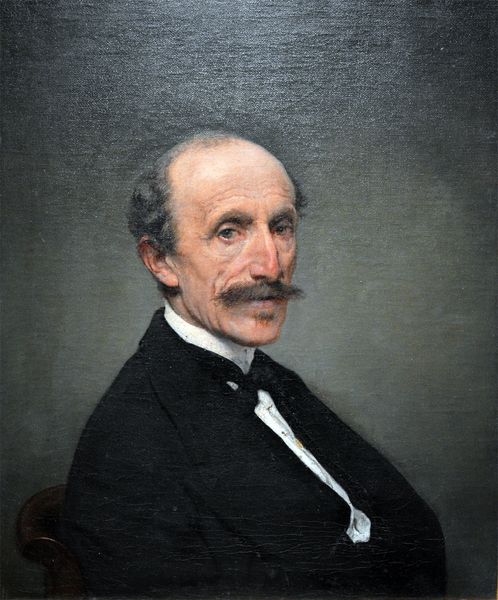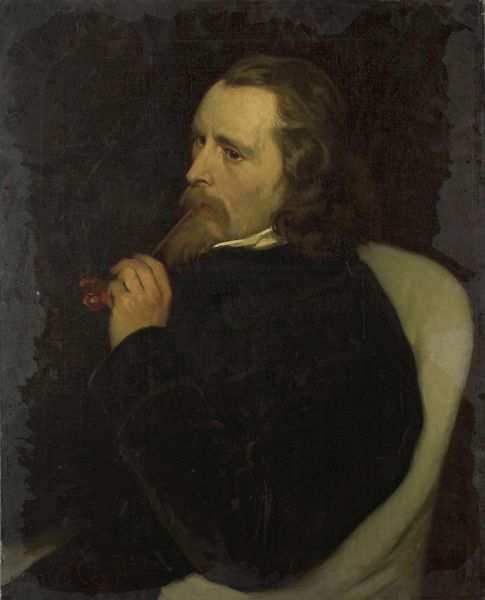
Dimensions: height 78.6 cm, width 58.3 cm, depth 7.4 cm
Copyright: Rijks Museum: Open Domain
Curator: Before us, we see the “Self-Portrait” by Johann Georg Schwartze, completed in 1869 using oil paint. Editor: Well, hello there! My first thought? A slightly melancholic accountant who moonlights as a poet. The eyes hold a story, even if the background keeps it closely guarded. Curator: It's fascinating how you see the melancholic – the use of muted colors definitely contributes. What strikes me are those piercing eyes; in the history of portraiture, the eyes are a key indicator. Notice anything familiar in that gaze? Editor: Totally! I feel like I've seen him sipping absinthe at a dimly lit Parisian café. But seriously, those eyes…they're like, "I know something you don't know," aren't they? Almost feels like he’s gazing directly into the future. What’s the feeling in relation to the artistic traditions of that period, I wonder? Curator: The mid-19th century witnessed the burgeoning of self-portraits, with artists increasingly turning inward, trying to capture not just likeness but also psychological depth. Look closely: despite the darkness, there's meticulous detail in his mustache, a very strong detail in that self-image. Editor: Oh, the mustache deserves its own wing in a museum! It is fantastic! Seriously though, I love how he plays with light and shadow; the dramatic contrast enhances that feeling of introspective solitude. Makes you wonder what was swirling in his mind during that time, doesn’t it? Curator: Indeed. Romanticism valued emotion and individualism highly, so those visual cues might lead us into this painting as something beyond the mere depiction of appearance. Think about the very act of creating a self-portrait - the artist as both subject and creator, exploring identity...it's incredibly loaded. Editor: I am with you on that. It’s as if he’s handing us a piece of himself, vulnerable but poised. Makes you question your own sense of self. Beautiful and unsettling. I think I need to sit with him a bit longer and decipher a little bit more. Curator: I agree. And maybe next time we should consider how his "Romantic" image may have served the function of elevating his profession at that time... fascinating, nonetheless.
Comments
No comments
Be the first to comment and join the conversation on the ultimate creative platform.
